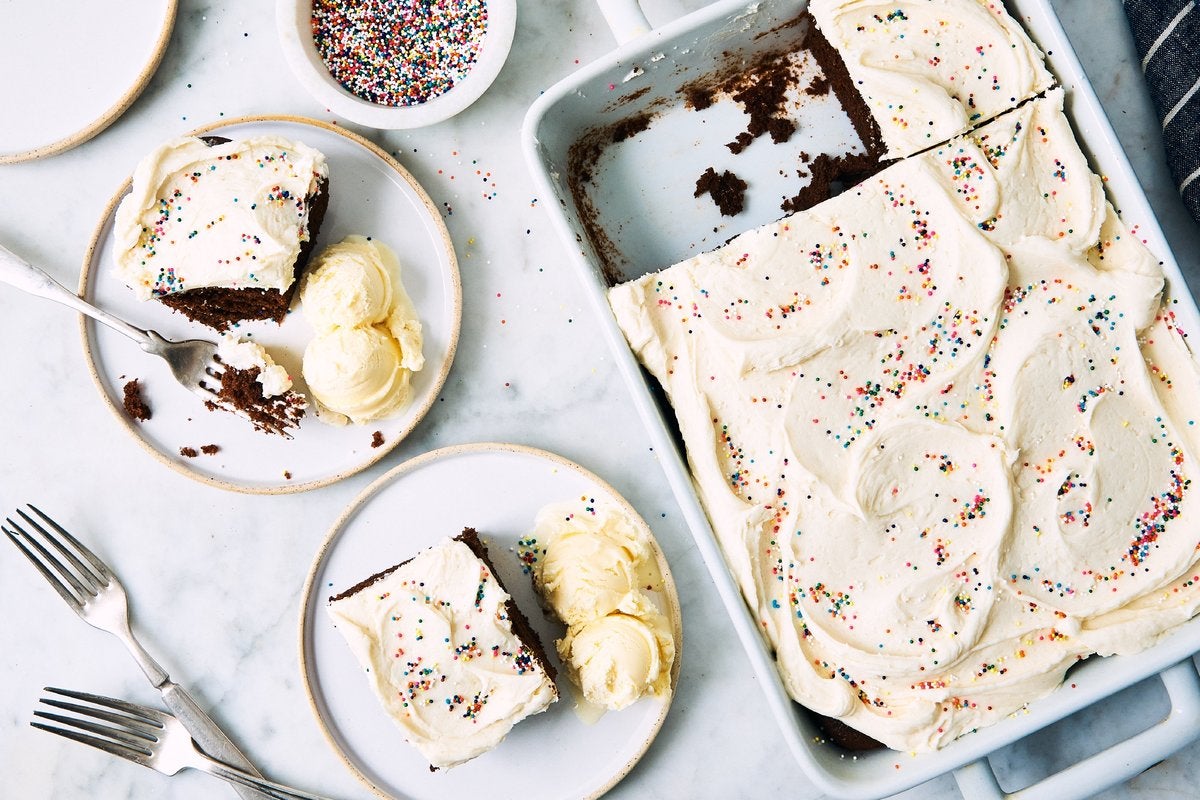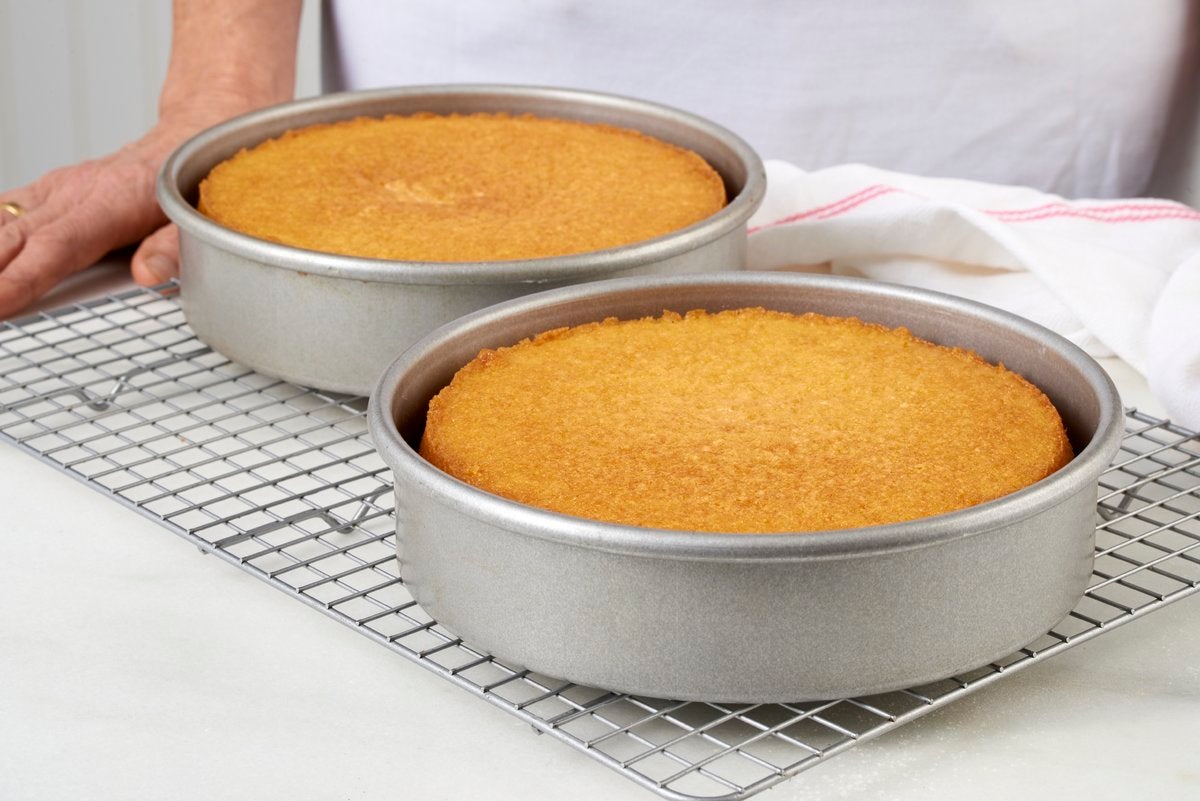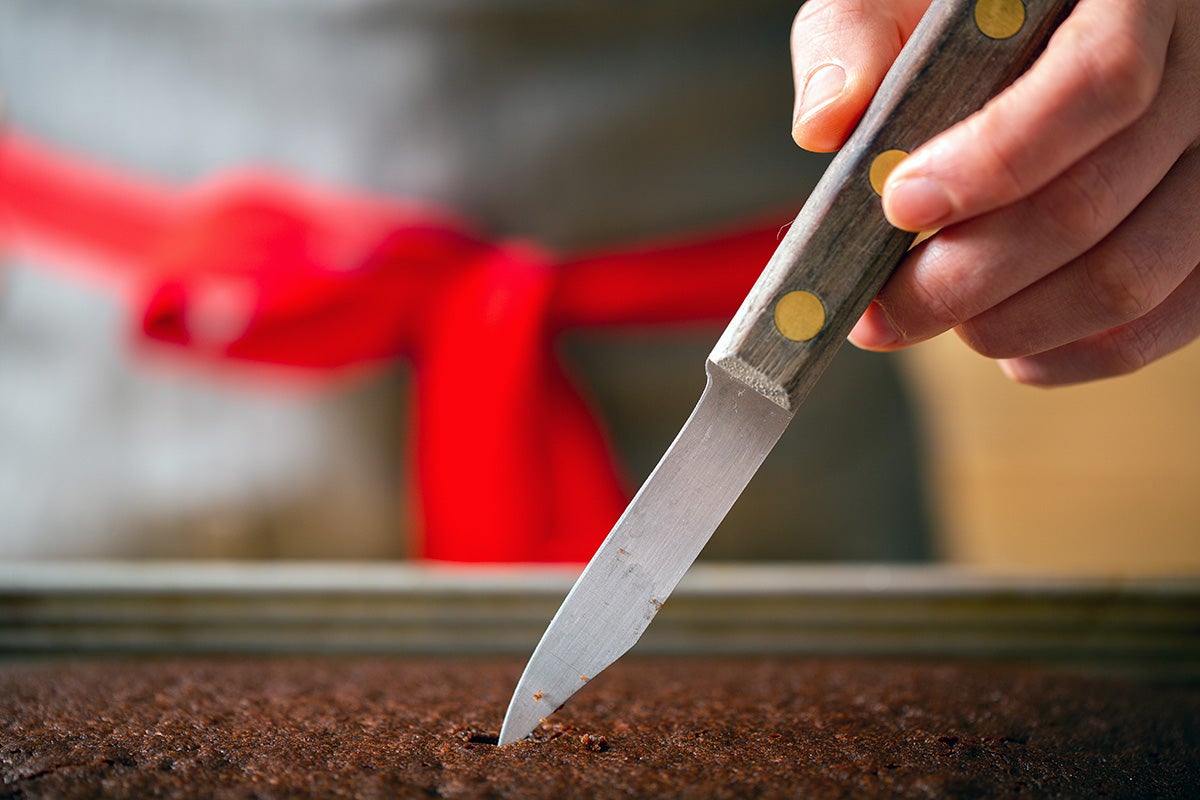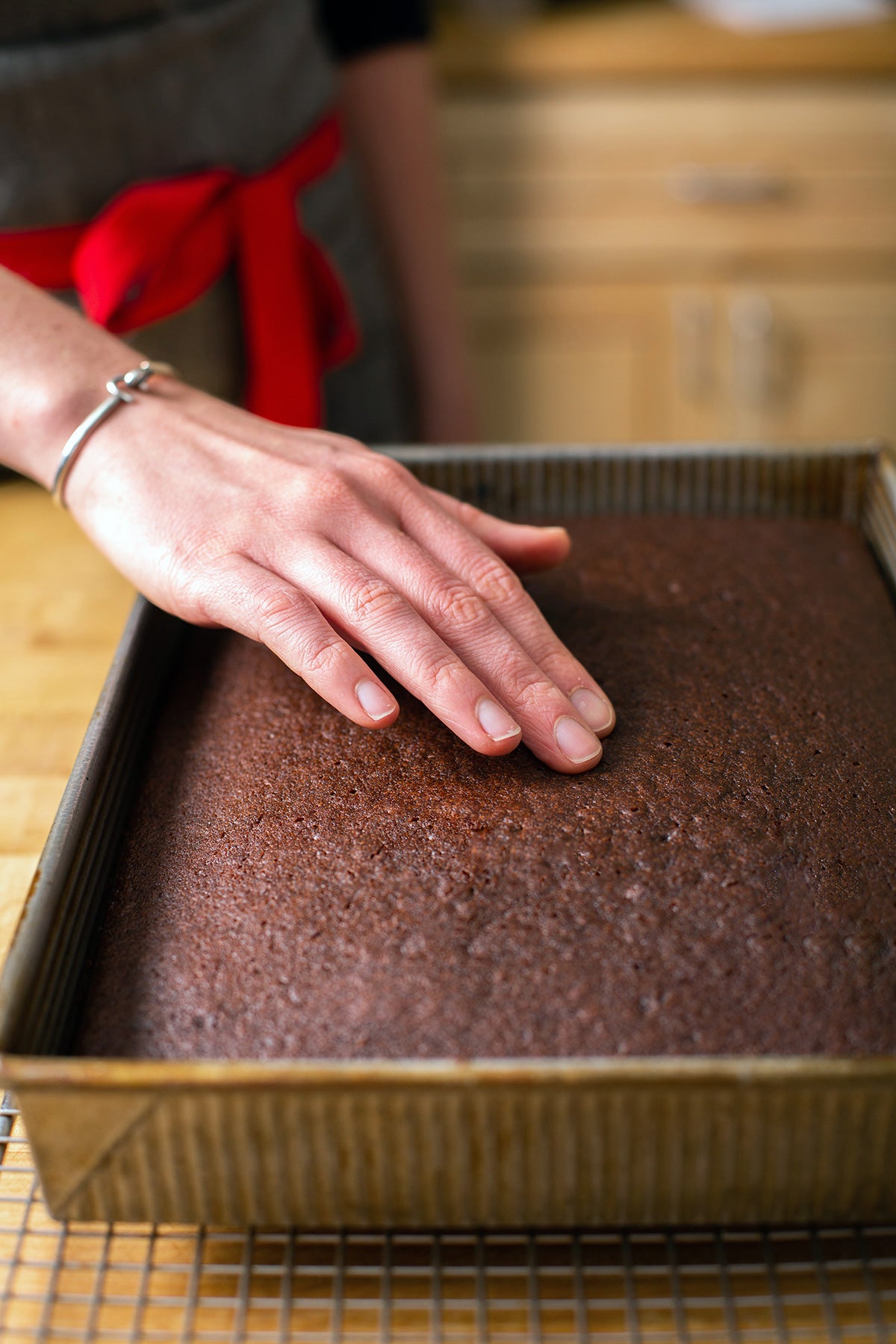


A properly baked cake is sublime. It’s tender, moist, and has a perfect crumb. An overbaked cake, on the other hand, can be dry and tough. And maybe worse, an underbaked cake is gummy and dense.
How do you avoid the most common cake-baking pitfalls? Learn how to tell when cake is done with these easy tips.

We’ll walk you through the most difficult example – chocolate cake. You can’t see chocolate cake become golden brown like you can with vanilla or white cake, so you’ve got to use other signs to tell when it’s done.
We’ll teach you everything you need to feel confident gauging the doneness of any kind of cake, from chocolate to vanilla. We’re going to make sure you truly master how to tell when is cake is done.

There are five things to look for when deciding if cake is finished baking. Depending on the kind of cake you’re making, some of these tests will be more useful than others, so it’s important to learn them all.

We’ll start with the cake-testing techniques that don’t even require you to open the oven.
Once your cake nears the end of the bake time, peer through the oven window and check the edges of the cake. When your cake is done, the sides will have pulled away from the pan slightly.
The edges of the cake are the first part to set and become fully baked. They shrink inward as the rest of the cake bakes and the crumb tightens.

If you’ve greased your cake pan, a small gap will form between the sides of the cake and the pan when it’s almost done baking. The gap might be small: between 1/8” and 1/4” is normal. This tells you that the outer part of the cake is fully baked, and the center probably is too.
The edges pulling away is a good first sign that you’re close to the end of the bake time, but you'll also want to use a few other techniques before calling the cake done.
Note: If you’re making a sponge cake (like angel food cake), this test won’t work since you don’t grease the sides of the pan. The cake will stick to the sides of the pan even when it’s fully baked. This helps give the cake support, but it means you can’t look for the edges pulling away as a sign of doneness.
When checking out the sides of the cake, you should notice something else too. Something lovely.
When your cake is done baking, it’ll fill your kitchen with an amazing aroma of butter and sugar (read: happiness!).
Vanilla cake often smells sweet. Even though “sweet” is technically a taste, our nose and tastebuds are connected. When we smell scents of vanilla and sugar, our brains tell us, “There’s something sweet around here!”

To no surprise, chocolate cake gives off its trademark fragrance — chocolate, sometimes with hints of coffee — once it’s properly baked. It might remind you of s’mores, or hot chocolate, or other nostalgic chocolate desserts of your childhood. (Smell is closely linked to memory.)
Bottom line: Your cake is probably close to done if you can smell it. If you can’t detect any aroma, it usually needs more time in the oven.
Once your cake smells heavenly and the edges have pulled away from the sides of the pan, it’s time to open the oven and take a look.

When you’re making vanilla or white cake, look for golden brown edges. (Ever heard of “GBD”? It means “golden brown and delicious.” It’s chef-speak for when something is perfectly baked or cooked in the kitchen. You want your cakes to be GBD!)
The edges should have a slightly darker hue, like a perfectly toasted marshmallow. The center should have developed some color as well. Depending on the cake formula, it may turn a light honey color or deep golden brown. The more sugar in your recipe, the browner the cake will be when it’s done.

What about chocolate cake? Because of the cocoa powder in the batter, it sure is hard to tell if the edges are turning golden brown.
You can still take a close up look at your chocolate cake and inspect the edges and top. You might have noticed a change in color; sometimes chocolate cake batter has a reddish hue before baking. Chocolate cake will also transition from a shiny to matte finish once it’s baked. Look for these signs in addition to using the other techniques mentioned here to tell when your cake is done.

If your cake successfully passes the first three tests, it’s time to pull out a toothpick. Or better yet, find a paring knife.
While you may have grown up watching someone in the kitchen insert toothpicks or long skewers into cakes to test for doneness, toothpicks don’t have very much surface area. Consider using a paring knife, which more clearly reveals underbaked crumbs. A knife is especially helpful if you’re baking a cake or quick bread made from a thick batter, like pound cake or banana bread.

The idea behind this test is you can insert a toothpick or paring knife into the center of the cake to see if the crumb has set. If the tester comes out clean, it’s done. If it comes out gummy or with crumbs clinging to it, the cake needs more time in the oven.
While you can assess the cake using this technique, it’s not enough of a test on its own. (Sometimes a tester will come out mostly clean but the cake still needs more time in the oven.) Remember that this tip is just one of five we’re teaching you around how to tell when cake is done. Don’t forget to use the others too!

After you test your cake with a toothpick or paring knife, you’ll want to gauge the texture of the cake another way. The best way to do this is to gently press on the center of the cake with a few fingers to see if it springs back.
If your fingers leave little indents, your cake isn't done baking. Return it to the oven for at least 5 minutes before checking it again.

If the cake springs back to your touch, that’s a good sign that the crumb structure has set and your cake is fully baked. You can remove your cake from the oven and let it cool on a rack until your recipe instructs you to turn it out of the pan (if it does at all).
Some bakers like to use a thermometer to test the internal temperature of baked goods to see if they're done baking.
For cake, this isn't so reliable. The internal temperature of cake varies based on the formula, ranging from 200°F to 210°F. Most classic cakes (butter cakes, pound cakes, chocolate and vanilla cakes, etc.) hover around 210°F when they're fully baked, but this isn't always a reliable threshold to look for.
Instead, use the five techniques outlined here to get a more complete understanding of whether your cake is done baking or not. You'll be better off, we promise!

It can be difficult to tell when cake is done baking, especially if you’re baking chocolate cake. That’s why we rely on all these signs together:
Use your senses to do these tests and gather information about the cakes you bake. Soon you’ll develop a gut feeling for when certain recipes are properly baked.

Remember that practice makes perfect (cakes), so keep on baking and honing your instincts by making more and more cakes!
Bake our Chocolate Cake recipe and gives these tests a whirl. If you have any other tips for telling when cake is done, please share them in the comments, below.
Thanks to Liz Neily and Jenn Bakos for taking the photographs for this post.